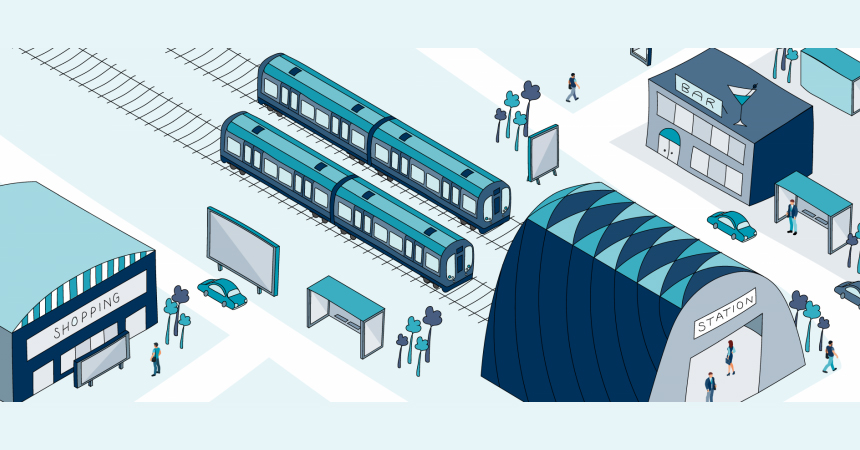AI-driven audience measurement is helping DOOH networks
AI-driven audience measurement has changed the way DOOH networks measure the audiences of their screens. While it is not difficult to calculate the exact number of people passing in front of a screen, this was not enough for advertisers who wanted to be sure that their ads were effective. Let us learn how AI-driven audience measurement is helping DOOH networks.
The advent of AI has enabled measurement agencies like Innovid and Nielsen to proactively estimate the size and demographics of an audience before it reaches the screen based on factors like time, location, weather, etc. This estimation is continuously updated as more data comes in making its predictions ever more accurate. The result? A clear picture about when, where, and how many people are watching each ad displayed across any number of screens in hundreds or thousands of locations worldwide.
This technology has helped solve one major problem for advertisers who are now sure that their ads are reaching the right audience. With more accurate data, they can make important decisions about media planning, ad scheduling, and even the creative content of the ads.
This is crucial for short-term campaigns like movie releases or sporting events where it is necessary to be able to plan and ensure that enough screens are available to reach the targeted audience.
What are the benefits of AI-driven audience measurement in DOOH networks?
The benefits of AI-driven audience measurement in digital out-of-home (DOOH) networks are apparent when considering viewership demographics and how they impact advertisers. Without this technology, advertisers have access to only limited data on location, age range, time of day, type of device used to watch an advertisement, and whether the ad was watched completely.
However, with artificial intelligence (AI) technology in place, advertisers can understand their target audience on a much more detailed level. By assessing these finer data points in real time, advertisers can adjust campaigns in real-time to optimize ROI and improve the return on investment for their companies.
For example, AI-driven audience measurement enables advertisers to better gauge which formats work best given the time of day or how effective certain placements truly are when compared to others. This dramatically changes how digital out-of-home advertising is measured today by also giving them insight into cost per interaction vs traditional measurements like GRPs or CPMs.
As the digital OOH industry continues to grow, advertisers are seeking more accurate and effective ways to reach their target audience. AI technology is helping to maximize the standing of this burgeoning medium by providing a much deeper understanding of who viewers are and how they watch advertisements in the DOOH network.
How does AI-driven audience measurement work?
As stated earlier, previous audience measurements in the DOOH industry were established with limited data. Without this technology, advertisers are only able to gauge demographics like age range or time of day when it comes to how DOOH networks are measured.
However, AI-driven audience measurement provides a much more detailed look at viewership by assessing finer data points, including the device used to watch video ads and whether the ad was watched completely.
The technology collects periodic audience presence data/images using sensors. Further analysis of the data/images provides accurate Audience count, age group, gender, determining dwell time, attention time and other data driven business insights. The optimized AI model are run-on cost-effective edge compute platforms such as Raspberry Pi and Nvidia's Jetson Nano delivering low cost edge solutions compared to cloud based solutions.
This allows advertisers to see their target audience in real-time with accurate audience measurement data. Once the frequency is analyzed, the information can be converted by artificial intelligence algorithms into viewer profiles with insights like age range, and gender.
This AI technology has already had widespread success across multiple industries including healthcare, retail, automotive, financial services, and more.
Now, this type of audience measurement is being used in DOOH networks to help advertisers better understand who viewers are while also providing them with additional cost-per interaction metrics on top of traditional measurements like GRPs and CPMs.
How is AI-driven audience measurement changing digital out-of-home advertising?
AI-driven audience measurement is truly impacting digital out-of-home advertising in several ways. This technology has allowed advertisers to see much more detailed viewership demographics based on video analysis, giving them the ability to adjust campaigns in real-time as needed.
For example, this type of technology can now be used to track cost per interaction vs traditional measurements like GRPs or CPMs given the detail provided by this added data about an advertisement's overall effectiveness.
In addition, because it gives advertisers a better understanding of their target audience, they can make better-informed decisions about how to tailor future campaigns vs blindly running advertisements that may not resonate with audiences.
Although AI-driven audience measurement is still a new technology, it has made great strides in the way digital out-of-home advertising is measured.
This change can be incredibly beneficial for companies and advertisers as they look to better gauge how their DOOH networks perform and make data-driven decisions on future campaigns.
How will AI-driven audience measurement adoption grow in the DOOH marketplace?
As this technology evolves, it has already begun to play a large role in the evolution of digital out-of-home advertising. Because of the significant variety of data being collected through video analysis by way of AI algorithms, there are now countless potential applications for this type of audience measurement.
Furthermore, as more companies begin to embrace AI-driven audience measurement, both advertisers and networks will benefit from higher ROI on campaigns.
There is no doubt that this new technology will continue to become an increasingly integral part of how OOH advertising is measured moving forward.
AI-driven audience management is being enormously accepted across the digital out-of-home market, while also showing signs of growth in other markets like retail and healthcare.

